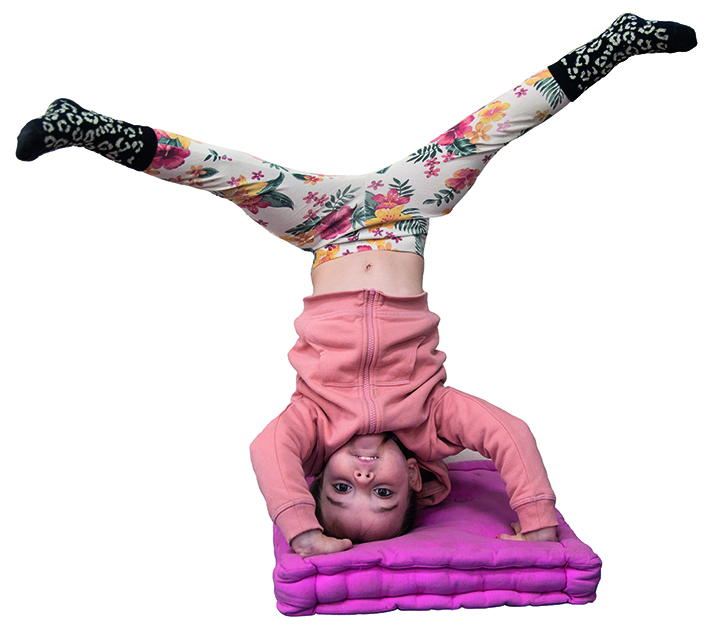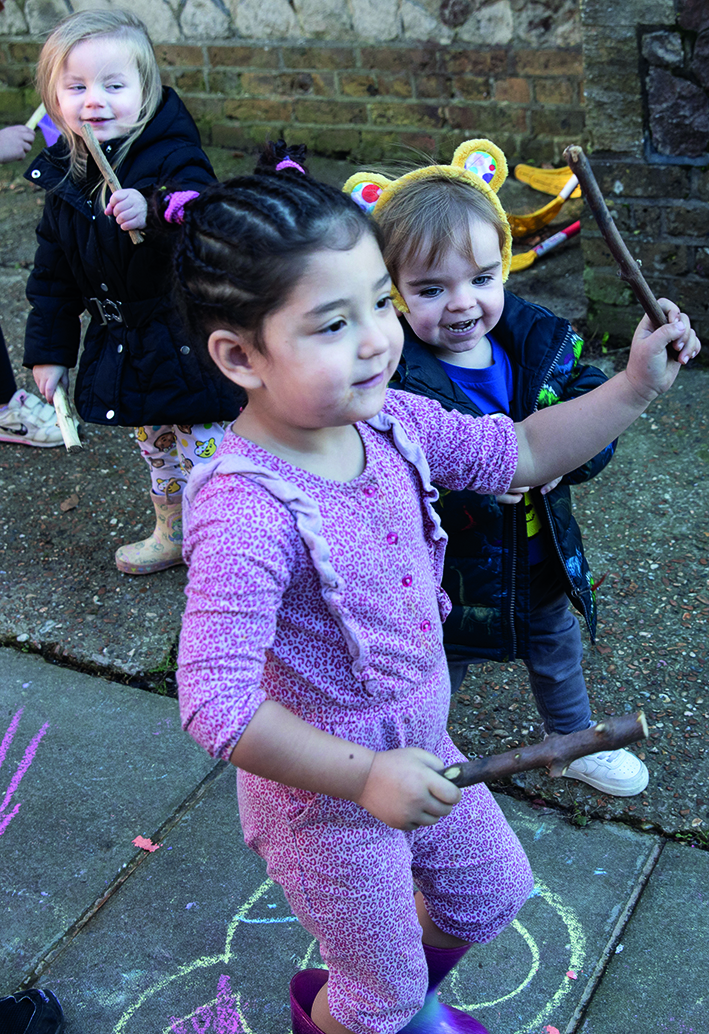
The level of children’s physical development informs not just their overall health and wellbeing but also how their bodies and brains can work together most effectively. ‘A child’s movement abilities reflect developmental maturity within the central nervous system,’ Sally Goddard Blythe said at Nursery World’s recent physical development conference. Movement builds these ‘motorways of the mind’ – neural networks which underpin children’s learning and development.
Physical development is ‘intricately interwoven with emotional, social, cognitive and language development’, says the Birth to 5 Matters guidance. But how many children are really getting this ‘extensive physical experience’ when their overall health and wellbeing has been of concern for many years and lockdowns provoked a rapid decline in their physical strength, confidence and competence, communication skills and emotional equilibrium?
According the Early Intervention Foundation, the impact of the pandemic on the early years was seen in ‘rises in obesity, challenges in breastfeeding support, decreases in oral healthcare use, varied vaccination rates and decreases in sleep quality’.
Glen Russell, manager of Ore Church Mice Preschool in Hastings, says, ‘Children returned from lockdown with significant setbacks to their physical development. The most notable change was a sort of learned helplessness, with a lot of “I can’t” or “Mummy does that”. The stuff that sits behind physical development, like can-do attitudes and perseverance, has been more important to work on.’
PD in the EYFS
 While it is a Prime Area, the scope of physical development in the EYFS is narrow and confined to gross and fine motor skills.
While it is a Prime Area, the scope of physical development in the EYFS is narrow and confined to gross and fine motor skills.
PhD researcher Nat Weir writes, ‘Children’s motor skills, cognitive functions, emotional regulation and social interactions are all influenced by the level of physical activity and movement experience they have. Opportunities to be active inside and outdoors should be threaded through the day – and properly embedded in policy.’
Technically, all qualified early years professionals are able to design and deliver safe and effective PD sessions. Since 2015, modules including ‘Support healthy lifestyles for children through exercise’ have been mandatory – but do they give the sector the critical underpinning knowledge or practical skills needed?
Before creating a training programme for Manchester GreaterSport in 2018, Sharon Skade reported that practitioners had a ‘general lack of underpinning knowledge of PD and an inability to make meaningful connections between theory and practice’.
The following points form the rationale for this article series:
- Currently there are no agreed national quality guidelines for early years physical development that teachers may refer to – leaving the area wide open to individual interpretation.
- The Chief Medical Officers’ physical activity guidelines for the early years (2017) suggest that 180 minutes a day is the baseline level that all children should experience. The guidelines have yet to be embedded effectively in policy or practice.
- Physical development is by far the weakest element in the EYFS (since ‘Health and Self Care’ was repositioned in ‘PSED’) and attracts the least support, funding or, anecdotally, scrutiny by Ofsted.
- The corresponding Early Learning Goals for physical development are unambitious and need revision so they produce relevant data that drives progress and change.
- Many practitioners lack confidence in this Prime Area and find it challenging to provide appropriate daily physical activities for children.
It is no surprise, therefore, that it is becoming increasingly common for settings to outsource their PD practice. Many of these companies and organisations have been operating for years and are willing to provide a service that pleases parents and mitigates the anxiety felt by many practitioners around physical development practice.
What has changed is the growing range of available options and the competition between them to attract children. Football, tennis, swimming, gymnastics, ballet and dance have been joined by boxing, rugby, martial arts, yoga and general ‘activities’ that are mainly sports based. The list continues to grow.
Why do settings use outside providers?
 There are clearly pockets of excellent practice, and all providers I have spoken to believe their principles and values have a positive impact on children’s lives – values such as respect, discipline, support and teamwork came up time and again.
There are clearly pockets of excellent practice, and all providers I have spoken to believe their principles and values have a positive impact on children’s lives – values such as respect, discipline, support and teamwork came up time and again.
John Parkinson of martial arts group Tiger Tots says, ‘We make a significant difference to children’s self-confidence, self-esteem, self-belief and in encouraging them to make healthy life choices. I think having grades, certificates, medals, performance and competition allow for achievement and success in ways that may not feature elsewhere in their lives.’
Significant emotional and financial investment is evident and reflected in a strong work ethic. Many believe these groups fulfil a wider function in their communities by offering positive male role models, a safe space for children and consistency of relationships. They are considered experts in their respective fields, providing resources that children may not access at home or school, while specific kit/uniforms give children a sense of belonging to a group engaged in a common purpose.
However, physical development trainer Helen Battelley says, ‘The biggest issue is coaches’ lack of early childhood knowledge and developmental processes and their “one size fits all” approach. Autonomy and agency that we would promote doesn’t fit with their skills-based, linear pedagogy.’
For example, Sue Thomas, a sports centre manager, says, ‘We see this coach coming in with nursery and Reception classes; it’s so sad – they sit in a line for ten minutes while he explains the session, then there is 20 minutes of activities that often the younger ones can’t manage as it’s too complicated, then they are back sitting while he reviews the session. Such a waste of time and space.’
Dr Ben Langdown, senior lecturer in sports coaching at the Open University, asks, ‘How much vigorous physical activity do children actually experience in these sessions and how much time do they spend just sitting around and waiting for a turn? I would also question if children’s voices are being properly heard here and how much are they involved in planning and self-assessment?’
I agree. Often coaches don’t understand that many children need time to observe, maybe nudge against equipment, try things out in their own way – and that they can easily be discouraged if overwhelmed by activities. Battelley adds that often these activities are not tailored for children with SEND.
Dr Langdown writes that PD ‘could be supported much more effectively in-house by embedding a movement culture across the whole curriculum that has greater legacy than external provision’.
Josh Candy, PE lead at Grandir UK, says there can be a compromise.
‘Early years staff cannot be expected to deliver a football lesson with no knowledge or experience. Equally, a qualified rugby coach may find a group of three-year-olds a challenge. Both sides need to work in harmony. Teachers can introduce a sports element to their usual physical development activities, and coaches can use teachers’ knowledge of their children to enhance the quality of their provision.’
When to outsource?
What can we learn from outside providers?
- They often play an important role in children’s lives, and you may observe different behaviours emerging, new friendships forming and skills maturing.
- They have useful skills, e.g. how to begin and end sessions, how to give instructions/feedback to children.
- You could adapt their resources, e.g. using rolled-up socks in place of balls – balancing on chalk lines, not beams.
What can they learn from us?
- How activities should reflect the individual, their interests, confidence levels and pace of learning.
- How their physical skills impact on other areas of development.
- How to properly support inclusive practice by adapting games.
- Enhanced observation skills.
What questions should we ask ourselves before engaging with outside providers?
- Do my children need this additional experience?
- Is it helping me more than them, and can I justify the expense?
- Have I done my due diligence around coaches’ qualifications, experience and knowledge?
- What do claims to be ‘EYFS friendly’ look like in practice?
- Always question any assertion of being ‘Ofsted-supported’.









